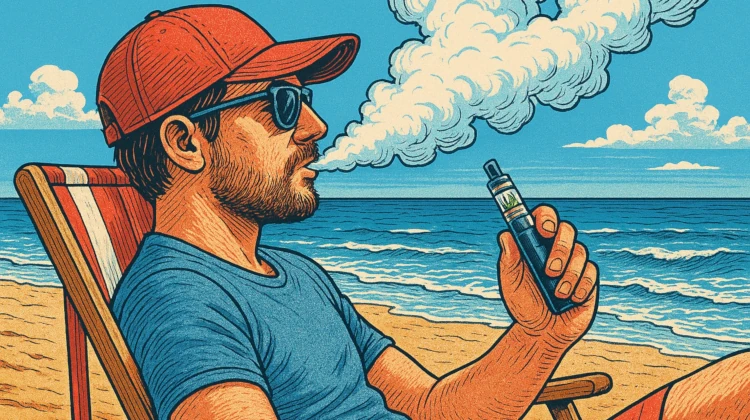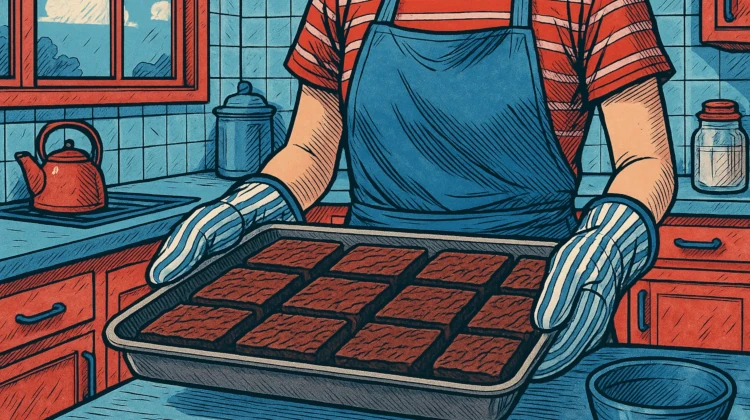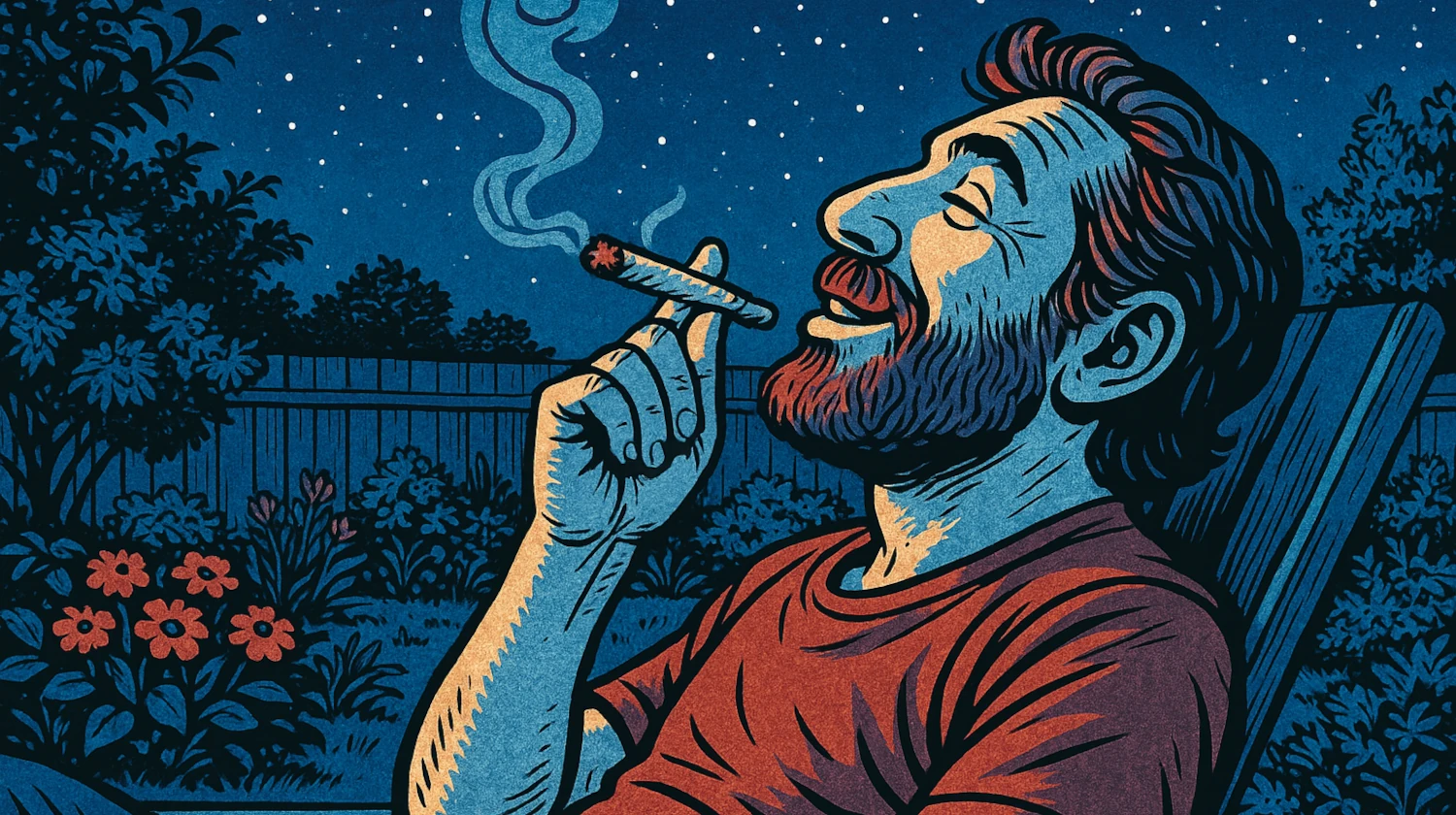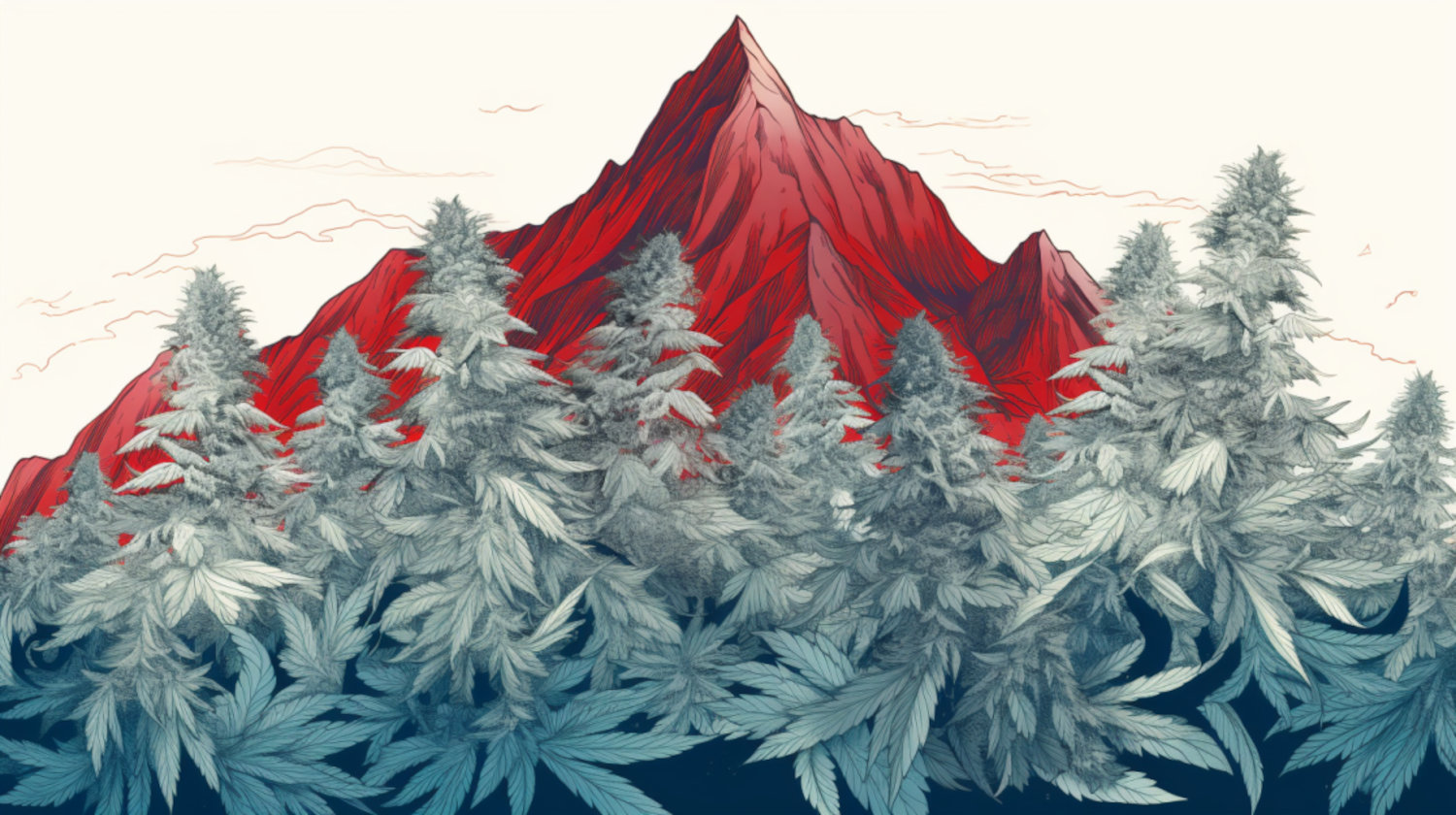Key Takeaways About the Length of a Weed High
- A weed high generally lasts from one to six hours, depending on several factors.
- The effects from inhalation methods such as smoking and vaping can last one to four hours.
- Weed edibles can get you high for six hours or even longer.
People are often intrigued by the possibility of medical cannabis, but the intoxicating effects of the plant cause them concern. The question “How long does a weed high last?” is among the most commonly asked by new patients. The answer depends on several factors, such as the type of product used, the amount consumed, and others.
How Long Does a Weed High Last on Average?

A cannabis high usually lasts anywhere from one to six hours, according to research from the International Journal of Drug Policy.1 The duration of intoxicating effects depends on several factors, including the consumption method and the potency (amount of THC or other cannabinoids) of the product used. Using a THC dosage chart can help you determine how much THC you are consuming,
Smoking and Vaping
Smoking weed will generally trigger effects for one to four hours, depending on the potency of the product, your tolerance, and how much you consume. The intoxicating effects of vaping cannabis can get you high for up to four hours. The high from these types of concentrates may be more intense because of their high potency, according to a study published in 2018.2 Dabbing is also likely to get you high for a similar duration, or perhaps a bit longer, thanks to the extremely high THC concentrations in extracts. Research on this consumption method is limited, so it's best to be cautious until you understand how extracts affect you.
How Long Do Edibles Last?
Although it can take longer for the intoxicating effects of cannabis edibles to kick in, they can get you high for typically much longer. The effects of edibles can last more than six hours, a factor patients should consider when determining which consumption method works best for them. Many patients find the longer-lasting effects of edibles desirable. Others may prefer a consumption method with a shorter duration.
What Factors Affect How Long Cannabis Lasts?

Several factors can affect how long cannabis products will get you high.
- Tolerance is a significant factor for patients who use cannabis regularly. A dose that will only be effective for 30 minutes for a regular medical cannabis user may get an uninitiated consumer high for hours.
- The dose size is also a significant factor. Taking just one puff off a joint may only trigger effects for about 20 minutes. But smoke the whole thing, and you might be laid out on the couch for the evening.
- The consumption method also affects how long a weed high will last. The intoxicating effects from inhalation methods such as smoking and vaping may start to fade within an hour. Weed edibles, on the other hand, can get you high for several hours.
- Physiological factors, such as metabolism and how much you have eaten, can also affect how long it takes for weed to kick in and how long the effects last.
- Combining cannabis with other substances may also affect how long you feel high. Mixing weed with alcohol, for example, may increase THC levels in the blood, a 2015 study determined.3
Some methods may reduce the duration of the intoxicating effects of cannabis, giving patients who have taken too much and are in danger of greening out a potential way to come down from their high.
There is research that points to eating pine nuts or smelling something pine-scented to help bring calm or clarity because of their high pinene content. Similarly, chewing peppercorns or smelling black pepper may help calm you down due to their high levels of caryophyllene.4 The research is far from conclusive, but some cannabis users do report that strains high in these terpenes tend to produce a more clear-headed and calm experience.
Some users report that a cup of coffee makes them feel more alert. Research shows that in some cases caffeine may help counteract the sleepy feelings typically associated with cannabis. There is also preliminary evidence that caffeine may suppress the effects of the endocannabinoid system.5 That said, caffeine may exacerbate the adverse effects of cannabis, like anxiety.
How Long Does it Take to Feel High?

For some patients, knowing how quickly a cannabis product will take effect is just as important as how long the effects will last. When seeking relief from symptoms such as pain or nausea, many people opt for solutions they know will kick in rapidly.
Inhalation methods, including smoking, vaping, and dabbing cannabis concentrates, have the quickest onset of intoxicating effects. When consuming cannabis with these methods, the effects can be felt almost immediately, usually within five to 10 minutes, often less. Likewise, the onset of effects with other inhalation methods, such as vaping and dabbing, usually occurs within minutes.
Cannabis edibles take longer to take effect, generally within 30 minutes to an hour, sometimes longer. It is important to keep this in mind when using edibles. Many people have become impatient and taken more of a brownie, gummy, or other weed edible before the effects of the first dose have had a chance to kick in. Many experienced users choose to wait at least one to two hours before re-dosing if they're not familiar with the product they're using.
The information in this website, including but not limited to images, graphics, text and other materials, is included for informational purposes only. None of the material on this site is intended to substitute for professional medical advice. Always seek advice from your qualified physician or healthcare provider if you have questions before starting any new healthcare regimen, and never disregard professional medical advice based on anything you read on this website or any other website.
This information, including images, is not medical advice. Consult a physician before starting or stopping medications or herbs, including cannabis. Information not evaluated by FDA and not intended to diagnose, treat, cure, or prevent disease.
Start Low, Go Slow
It’s essential for cannabis consumers, especially those who are new to the plant, to remember that everyone is an individual. Everybody’s unique endocannabinoid system, experience with cannabis, and other factors influence how they react to cannabis. Use the information presented here as a guideline, rather than a set of hard and fast rules.
The effects of consuming too much weed vary and can include anxiety, nausea, or even passing out. To avoid getting too high, it’s always best to start low and go slow.
For beginning cannabis users and those trying an unfamiliar product, starting with a low dose to determine its effects is always a good idea. After waiting 15 to 30 minutes (longer with edibles), assessing the effects of the first dose before consuming can help you avoid overconsumption.
With experience, it becomes easier to judge how a particular cannabis product will affect you and how long the effects will last, making it less likely you will get too high or the effects will last too long.
References
- Borodovsky JT, Crosier BS, Lee DC, Sargent JD, Budney AJ. Smoking, vaping, eating: Is legalization impacting the way people use cannabis? International Journal of Drug Policy. 2016;36:141-147. doi:https://doi.org/10.1016/j.drugpo.2016.02.022 ↩︎
- Spindle TR, Cone EJ, Schlienz NJ, et al. Acute Effects of Smoked and Vaporized Cannabis in Healthy Adults Who Infrequently Use Cannabis. JAMA Network Open. 2018;1(7):e184841. doi:https://doi.org/10.1001/jamanetworkopen.2018.4841 ↩︎
- Marilyn A. Huestis, PhD et al. Controlled Cannabis Vaporizer Administration: Blood and Plasma Cannabinoids with and without Alcohol. Clinical Chemistry, May 2015 DOI: 10.1373/clinchem.2015.238287 ↩︎
- Russo EB. Taming THC: potential cannabis synergy and phytocannabinoid-terpenoid entourage effects. British Journal of Pharmacology. 2011;163(7):1344-1364. doi:https://doi.org/10.1111/j.1476-5381.2011.01238.x ↩︎
- Cornelis MC, Erlund I, Michelotti GA, Herder C, Westerhuis JA, Jaakko Tuomilehto. Metabolomic response to coffee consumption: application to a three-stage clinical trial. Journal of Internal Medicine. 2018;283(6):544-557. doi:https://doi.org/10.1111/joim.12737 ↩︎




